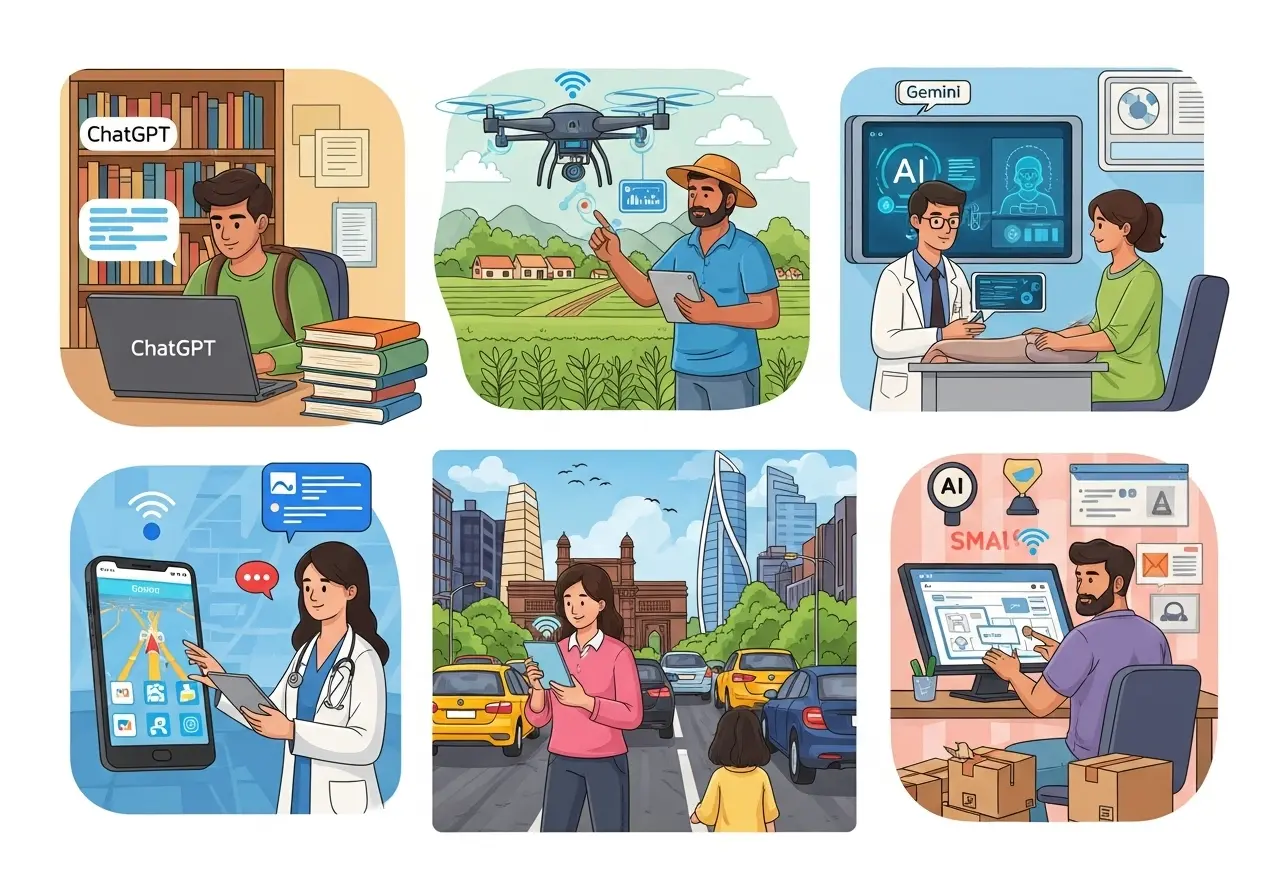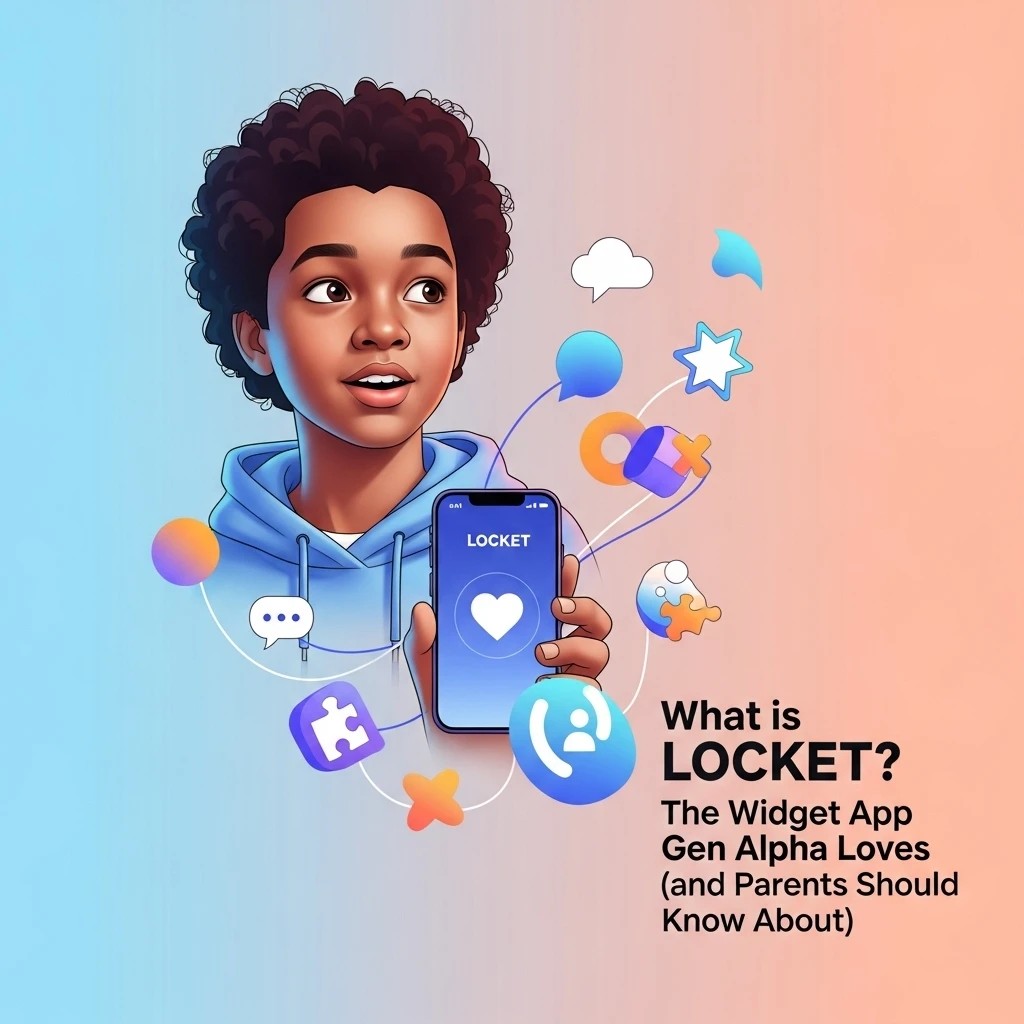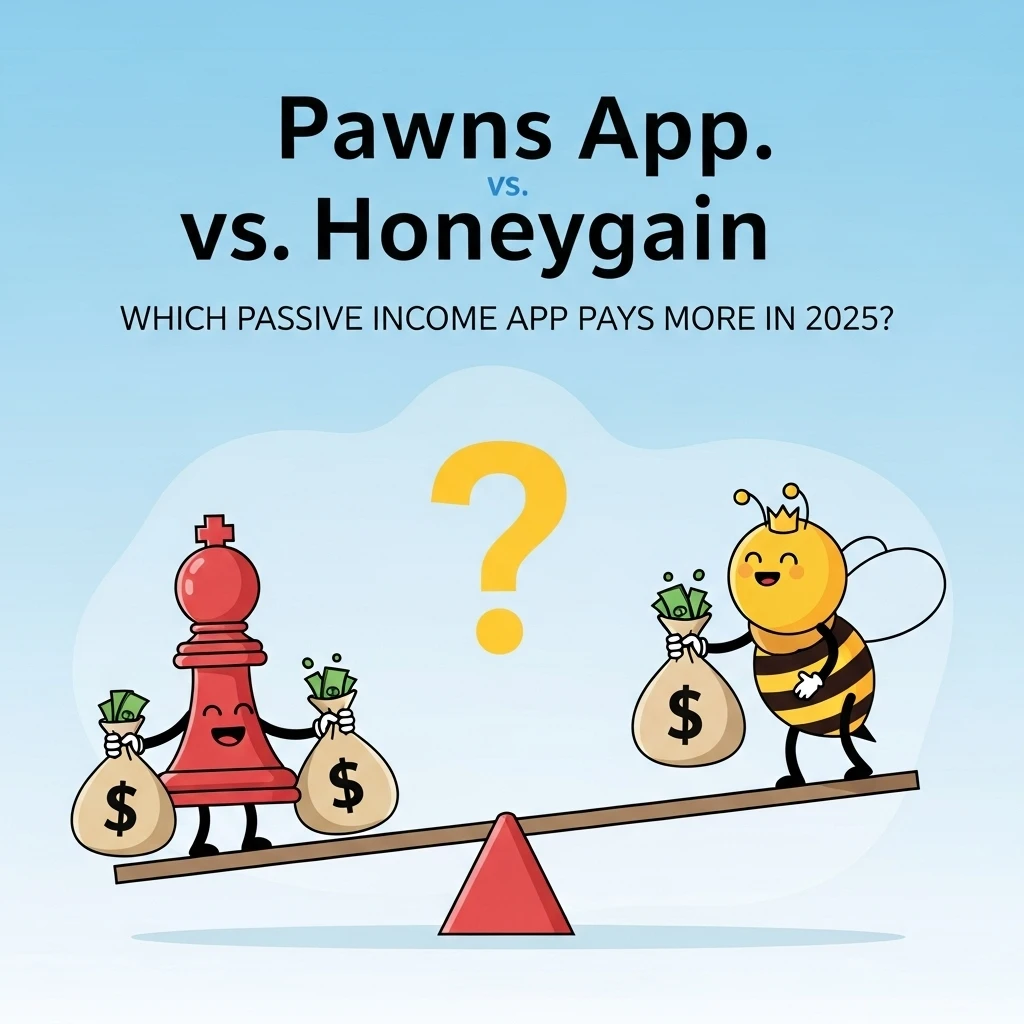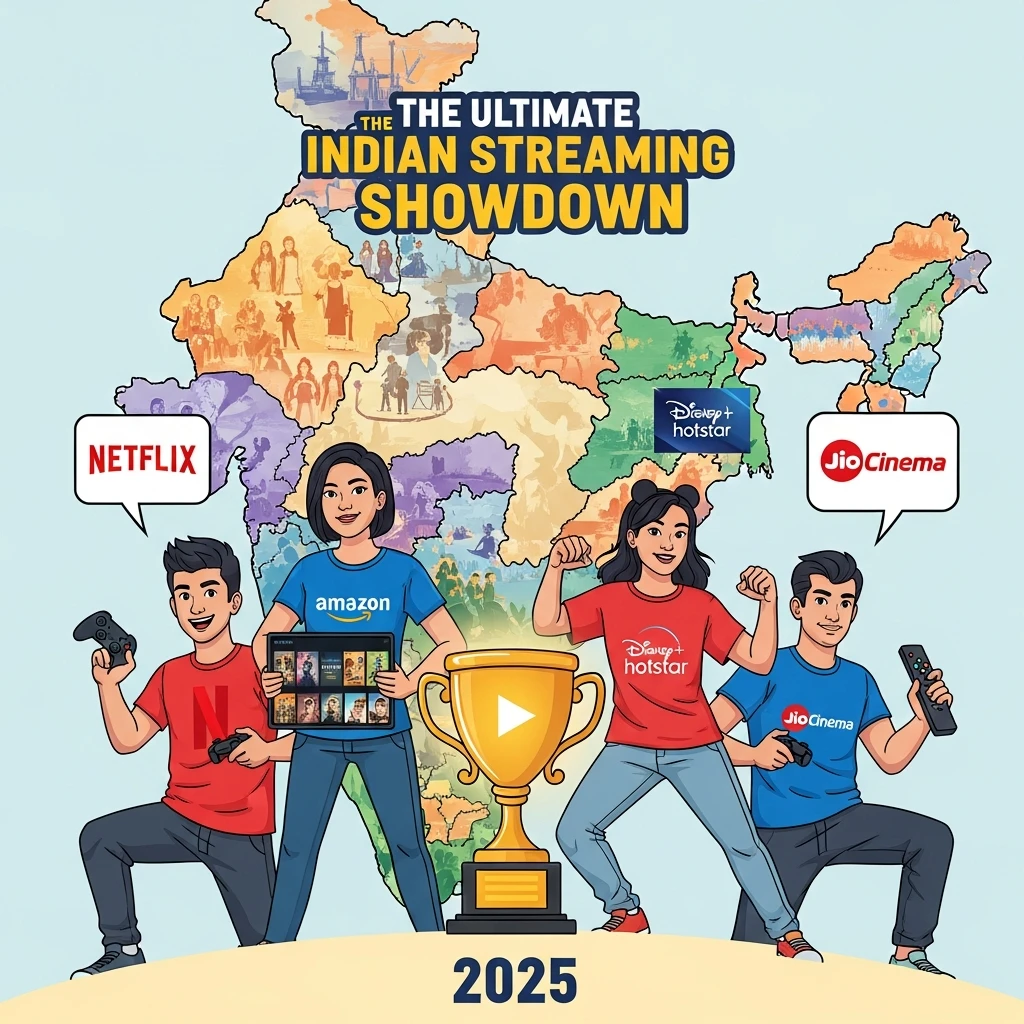The Ultimate Guide to AI Use Cases in India (2025)
By Amandeep Singh
Founder, CancelMates. Tracking the AI revolution in India.
The global AI boom is no longer a distant headline; it's a daily reality in India. From a student in a small town getting coding help to a large enterprise automating its customer service, tools like ChatGPT and Google Gemini are being adopted at a massive scale, with India being a top-3 market for both.
But how are Indians *really* using this technology? This isn't just about drafting emails. It's about creating viral social media trends, bridging language divides, and empowering small businesses to compete on a global stage. This is the definitive 2025 guide to the most impactful AI use cases happening in India right now, backed by real data and specific examples.
The Big Picture: It's a Battle for Cultural Resonance
In India, the "best" AI isn't just about technical superiority. It's about cultural connection. As the data shows, Gemini's explosive growth is fueled by its ability to tap into local trends like "Saree edits," proving that in the Indian GenAI race, Gen Z and cultural relevance are deciding the winners.

The State of AI in India: A Data Snapshot (Sep 2025)
| Platform | Market Share (India) | India's Share of Global Traffic | Recent Growth (Jun-Aug) |
|---|---|---|---|
| ChatGPT | ~76% (The Incumbent) | 11.21% | -14.09% |
| Google Gemini | Rising Fast (The Challenger) | 27.31% | +30.27% |
Source: Based on data from Similarweb & StatCounter, August 2025.
Table of Contents
1. Supercharging Indian Businesses & Startups
For India's millions of SMEs and burgeoning startups, AI is a massive leveling field, providing access to capabilities once reserved for large corporations.
- Hyper-Localized Marketing: Digital marketers and e-commerce sellers are using tools like Jasper AI and Writesonic to generate product descriptions, ad copy, and social media campaigns in multiple Indian languages (like Gujarati and Hindi), helping them connect with a wider audience on platforms like Flipkart and Amazon.
- 24/7 Multilingual Customer Support: Homegrown unicorns like Haptik and Yellow.ai are leading the charge in conversational AI. They use powerful language models to build chatbots that can handle customer queries in English, Hindi, Tamil, and more, significantly reducing costs and improving user experience for major brands.
- Robotic Process Automation (RPA): In sectors like banking and telecom, platforms like UiPath and Automation Anywhere are being used to automate repetitive paperwork, data entry, and compliance tasks, reducing errors and speeding up processes.
- AI-Powered Video Production: To cut down on high production costs, businesses are turning to services like Synthesia and the Indian startup Rephrase.ai to create professional marketing and training videos with AI avatars in minutes.
- Enterprise-Grade Analytics: Large Indian enterprises in banking, healthcare, and insurance rely on robust platforms like IBM WatsonX and Claude AI for large-scale data analysis, prioritizing data privacy and ethical considerations.
2. Driving Creativity & Viral Gen Z Culture
Nowhere is AI's impact more visible than in the explosion of user-generated content. In India, viral trends are a primary driver of AI adoption among the youth.
- Culturally Resonant Image Generation: Gemini's massive 30% growth spurt was fueled by its ability to create "Vintage Saree" photo edits, a trend that resonated deeply with Indian users and generated over 500 million images. This proves that cultural alignment can be more powerful than raw market share.
- Global Trends with Local Flavor: Similarly, ChatGPT's DALL-E 3 was used to create over 700 million images based on the global "Studio Ghibli" anime style, with India being the fastest-growing market for the trend.
- Democratizing Digital Art & Design: Tools like MidJourney, Stable Diffusion, and Adobe Firefly are empowering a new generation of freelancers, designers, and small businesses (e.g., a Gujarati textile shop) to create high-quality logos, ad banners, and marketing visuals at a fraction of the traditional cost.
3. Revolutionizing Education and Skill Development
AI is rapidly becoming an indispensable co-pilot for students and lifelong learners across India, helping to bridge knowledge gaps.
- 24/7 Personalized Tutoring: Students use models like ChatGPT and Gemini as always-on tutors to explain complex scientific concepts, solve math problems, and get personalized feedback for competitive exams like JEE, NEET, and UPSC.
- Coding & Developer Assistance: In India's booming tech sector, AI assistants are used as pair programmers to write code, debug errors, and learn new languages. Open-source hubs like Hugging Face are invaluable resources for students and startups building custom AI applications.
- Productivity and Project Management: Tools like Notion AI are incredibly popular among students and freelancers for organizing notes, managing tasks, summarizing lecture transcripts, and drafting project reports.
4. Bridging the Regional Language Divide
For AI to be truly successful in India, it must speak the language of its people. This is one of the most critical and rapidly developing use cases.
- Content Creation in Vernacular: ChatGPT and Gemini now support dozens of Indian languages, allowing creators and businesses to generate articles, scripts, and social media posts in Hindi, Bengali, Tamil, Telugu, Marathi, Gujarati, and more.
- Real-Time Translation & Communication: AI is breaking down communication barriers, allowing for instant translation of documents, emails, and even live conversations, which is crucial for India's diverse business landscape.
- Accessible Government & Healthcare Services: Startups like Qure.ai use AI for medical imaging diagnostics in areas with limited specialists, while government bodies are exploring AI chatbots to make public services more accessible to citizens in their native languages.
5. Key Challenges to AI Adoption in India
Despite the rapid adoption, several hurdles remain for widespread, equitable AI use in India:
- Cost Barrier: The subscription fees for powerful, pro-level AI platforms can be prohibitively expensive for students and small businesses.
- Language Nuances: While support for major languages has improved, AI models still struggle with the vast diversity of regional dialects and colloquialisms.
- Data Privacy: Navigating India's data privacy laws is a significant concern for businesses handling sensitive user information with AI.
- The Skills Gap: There is a growing need for a skilled workforce that can develop, manage, and effectively use AI tools, especially in smaller towns and non-tech sectors.
Frequently Asked Questions
Q: Why is India such a critical market for the ChatGPT vs. Gemini rivalry?
A: Because of its sheer scale and growth. India contributes a massive portion of global traffic for both platforms (11% for ChatGPT, 27% for Gemini). The platform that wins the loyalty of India's young, mobile-first population has a significant advantage in the future global AI market.
Q: Which AI platform is Gen Z in India choosing?
A: Gen Z's loyalty is fluid and trend-driven. They flock to whichever platform offers the most engaging and culturally relevant viral features. Gemini is currently winning this race with trends like the "Saree edits," leading to faster growth among younger users, while ChatGPT's "Ghibli" trend also saw massive adoption.
Q: What is the difference between an open-source AI (like LLaMA) and a proprietary one (like GPT-4)?
A: A proprietary AI like GPT-4 is a ready-to-use product managed by a company; it's easy to access but offers limited customization. An open-source AI like Meta's LLaMA allows developers to download, modify, and run the model on their own servers, offering complete data privacy and control, but requires significant technical expertise and hardware.
Q: What is a "multimodal" AI like Gemini 1.5 Pro?
A: A multimodal AI can understand and process different types of information at once, not just text. For example, you can give Gemini 1.5 Pro a video, an audio file, or an image along with a text prompt, and it can analyze all of them together to give you a comprehensive answer.
Q: Which AI is best for coding?
A: GPT-4o is widely considered the best all-around AI model for coding due to its speed and accuracy. However, open-source models like Mistral and LLaMA 3 are very popular among developers who need a self-hosted solution.
Q: What should a professional or student focus on?
A: The key is to focus on hybrid skills. Don't just learn to use one tool. Learn the principles of prompt engineering, creative problem-solving, and how to combine AI output with your own expertise. The platforms will keep evolving, but your adaptability is the real long-term skill.


